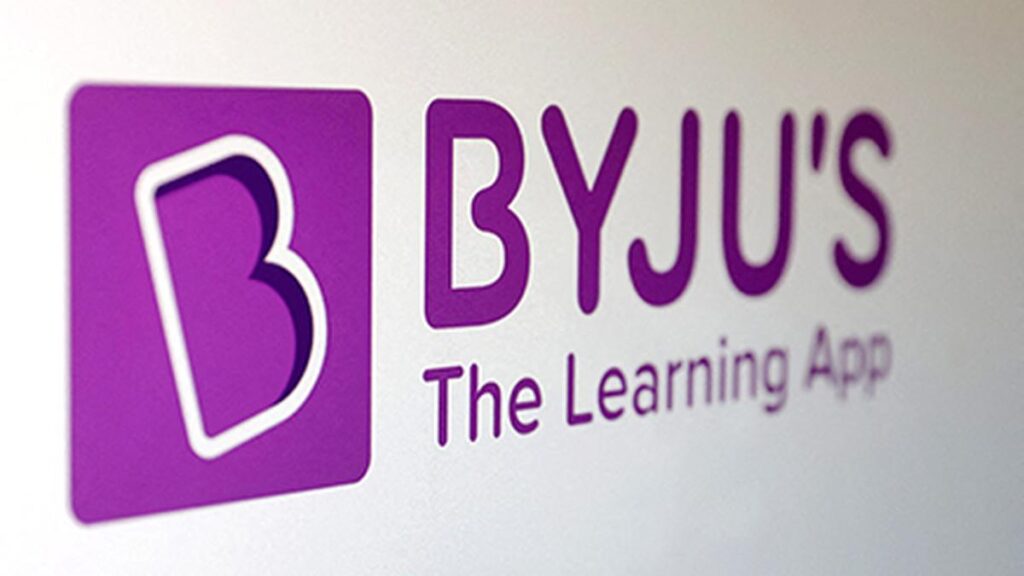
Byju's Insolvency Case: NCLAT Dismisses BCCI and Riju Raveendran's Settlement Plea | Legal Analysis
Byju’s Insolvency Case: NCLAT Dismisses BCCI and Riju Raveendran’s Settlement Plea
The National Company Law Appellate Tribunal (NCLAT) has rejected the settlement plea in the ongoing Byju’s insolvency case
Table of Contents
- NCLAT’s Decision: Settlement Plea Rejected
- Legal Arguments and Section 12A Requirements
- Timeline Analysis: Understanding the Critical Dates
- Case History: How Byju’s Insolvency Proceedings Evolved
- The Glas Trust Factor: $1.2 Billion Debt Implications
- Form FA Controversy: Timing and Procedural Issues
- Regulatory Implications: What This Means for IBC Cases
In a significant development in the Byju’s insolvency case, the National Company Law Appellate Tribunal (NCLAT) has dismissed appeals filed by the Board of Control for Cricket in India (BCCI) and Riju Raveendran seeking withdrawal of insolvency proceedings against the troubled edtech company. The appellants had requested the tribunal to consider their settlement agreement outside the Committee of Creditors (CoC) framework, but the NCLAT has upheld the earlier ruling by the Bengaluru bench of the National Company Law Tribunal (NCLT) that had directed the settlement offer to be placed before the CoC.
NCLAT’s Decision: Settlement Plea Rejected
The Chennai bench of the NCLAT, comprising Justice Rakesh Kumar Jain and Jatindranath Swain, delivered a comprehensive 36-page judgment dismissing the appeals in the Byju’s insolvency case. The bench concluded that since the settlement proposal was filed after the formation of the Committee of Creditors (CoC), it must follow the provisions outlined in Section 12A of the Insolvency and Bankruptcy Code (IBC), which requires approval from 90% of the CoC members.
This ruling is particularly significant as the CoC for Byju’s includes US-based Glas Trust, the trustee for lenders to whom Byju’s reportedly owes $1.2 billion. Glas Trust has been actively involved in separate insolvency proceedings against the company, complicating any potential settlement between Byju’s and BCCI.
Key Points of the NCLAT Ruling
- Appeals by BCCI and Riju Raveendran dismissed without costs
- Settlement proposal must go through CoC as per Section 12A
- Timing of Form FA submission (post-CoC formation) was decisive
- Previous NCLT Bengaluru bench order upheld
- 90% voting share approval from CoC required for withdrawal
Legal Arguments and Section 12A Requirements
The central legal debate in this Byju’s insolvency case revolved around the interpretation of Section 12A of the IBC and its accompanying regulations. Both BCCI and Riju Raveendran contended that since their application was filed before the constitution of the CoC, the provisions of Section 12A coupled with Regulation 30A(1)(a) should apply, bypassing the need for CoC approval.
However, the NCLAT clarified the legal position, stating: “If the application under Section 12A is filed under Regulation 30A(1)(a) before the constitution of CoC then Section 12A which mandates the approval of such application for withdrawal by 90 per cent voting share of the CoC shall not apply but if the application is filed after the constitution of the CoC then the provisions of Section 12A shall apply with full force.”
| Legal Provision | Application Timing | Requirement |
|---|---|---|
| Regulation 30A(1)(a) | Before CoC formation | Interim Resolution Professional can file directly with NCLT |
| Regulation 30A(1)(b) | After CoC formation | Requires 90% voting approval from CoC |
| Section 12A | Any time during CIRP | Provides framework for withdrawal of insolvency |
| Form FA | Application format | Must follow appropriate timing requirements |
Timeline Analysis: Understanding the Critical Dates
A critical aspect of the NCLAT ruling was the timeline analysis of when various applications were filed in the Byju’s insolvency case. The tribunal noted that Form FA, which is the application for withdrawal of Corporate Insolvency Resolution Process (CIRP), was submitted on November 14, 2024, which was after the formation of the CoC.
This timing was decisive in the judgment, as the NCLAT explicitly stated: “Form FA, admittedly having been filed on November 14, 2024, is post (formation of) CoC.” This finding contradicted the appellants’ claims that their withdrawal application should be considered under the pre-CoC framework.
Critical Timeline in Byju’s Insolvency Case
- July 16, 2024: CIRP initiated against Byju’s by NCLT (₹158.90 crore BCCI claim)
- August 2, 2024: NCLAT initially set aside insolvency proceedings after settlement
- August 16, 2024: BCCI submitted Form FA to the IRP but with conditional filing instructions
- October 23, 2024: Supreme Court overturned NCLAT’s stay order, reviving the CIRP
- November 14, 2024: Form FA officially filed (post-CoC formation)
- February 10, 2025: NCLT Bengaluru directed settlement to be placed before CoC
- April 2025: NCLAT Chennai dismissed appeals against NCLT order
Case History: How Byju’s Insolvency Proceedings Evolved
The Byju’s insolvency case has followed a complex legal path with multiple twists. The Corporate Insolvency Resolution Process (CIRP) against Think & Learn, which owns the Byju’s brand, was initially triggered on July 16, 2024, when the NCLT admitted a ₹158.90 crore claim from BCCI as an operational creditor. This stemmed from a Team Sponsor Agreement that Byju’s had entered into with the cricket body in 2019.
Following this initial order, Byju Raveendran, the company’s founder, approached the NCLAT, which temporarily set aside the insolvency proceedings on August 2, 2024, after approving a settlement with BCCI. However, this ruling was subsequently challenged by Glas Trust before the Supreme Court. In parallel, Glas Trust had also filed a separate insolvency petition seeking resolution of its massive debt claim of approximately $984.3 million (around ₹8,200 crore).
The situation reached a critical juncture when the Supreme Court, on October 23, 2024, set aside the NCLAT’s stay order and directed BCCI to approach the NCLT for settlement. This Supreme Court intervention effectively revived the insolvency proceedings against Byju’s, leading to the current legal complications.
Understanding CIRP in the Byju’s Context
The Corporate Insolvency Resolution Process (CIRP) is a structured mechanism under the Insolvency and Bankruptcy Code that follows these stages:
- Admission: NCLT admits a creditor’s claim (BCCI’s ₹158.90 crore in this case)
- IRP Appointment: Interim Resolution Professional takes control of the company
- CoC Formation: Committee of Creditors is formed to oversee the process
- Resolution Period: 180 days (extendable to 270 days) to find a resolution
- Settlement Option: Section 12A allows withdrawal if 90% of CoC approves
- Resolution/Liquidation: Either company is resolved through a plan or liquidated
The Glas Trust Factor: $1.2 Billion Debt Implications
A significant complicating factor in the Byju’s insolvency case is the involvement of Glas Trust, which represents lenders owed a staggering $1.2 billion by the edtech company. This financial creditor has taken an active role in the proceedings, even challenging the initial settlement between Byju’s and BCCI before the Supreme Court.
The inclusion of Glas Trust in the Committee of Creditors has substantial implications for any settlement attempt. As a financial creditor with a massive claim, Glas Trust would have significant voting rights within the CoC, making the 90% approval threshold required under Section 12A particularly challenging to achieve without their support.
This situation highlights the complex creditor dynamics in high-profile insolvency cases, where different creditors with varying interests and claim sizes must navigate the collective insolvency resolution framework provided by the IBC.
Byju’s Debt Structure
The debt situation that led to this insolvency case involves multiple creditors:
- BCCI (Operational Creditor): ₹158.90 crore (~$19 million) for sponsorship deal
- Glas Trust (Financial Creditor): $984.3 million (~₹8,200 crore) representing lenders
- Other Creditors: Various operational and financial creditors with smaller claims
- Total Reported Debt: Approximately $1.2 billion in various obligations
- Asset-Liability Gap: Significant, leading to liquidity and solvency challenges
Form FA Controversy: Timing and Procedural Issues
A technical yet crucial aspect of the Byju’s insolvency case ruling concerns the submission of Form FA, which is the formal application for withdrawal of the CIRP. Although BCCI submitted this form to the Interim Resolution Professional (IRP) on August 16, 2024, they had specifically instructed the IRP to file it only after the resolution of the appeal pending before the Supreme Court.
Riju Raveendran had contended that there was a delay on the part of the IRP in filing the withdrawal form, suggesting procedural negligence. However, the NCLAT firmly rejected this argument, noting: “We also do not agree with the Appellant on the issue that the IRP had erred in not submitting the application for withdrawal within three days as stipulated in Regulation 30A(3) because of the fact that the Appellant himself had directed/asked the RP to file form FA only after the dismissal of the appeal which was otherwise allowed on 23.10.2024.”
This observation highlights the importance of procedural compliance and proper timing in insolvency proceedings, especially when seeking to withdraw from an ongoing CIRP under the IBC framework.
| Form FA Requirement | What Happened in Byju’s Case | NCLAT’s Finding |
|---|---|---|
| Should be filed promptly | Submitted with conditional filing instructions | Delay caused by appellant’s own instructions |
| IRP must file within 3 days (Reg. 30A(3)) | IRP followed conditional filing instruction | IRP not at fault for following instructions |
| Timing determines applicable regulation | Filed after CoC formation | Section 12A with CoC approval applies |
Regulatory Implications: What This Means for IBC Cases
The NCLAT ruling in the Byju’s insolvency case has broader implications for how settlement proposals and withdrawal applications are handled under the Insolvency and Bankruptcy Code. It reinforces the sanctity of the Committee of Creditors as the primary decision-making body once insolvency proceedings have advanced to that stage.
This judgment clarifies the strict interpretation of Section 12A and Regulation 30A, emphasizing that timing is critical when seeking to withdraw insolvency proceedings. It also underscores that procedural requirements cannot be circumvented, even in high-profile cases involving significant corporate entities and substantial financial stakes.
For other companies facing insolvency proceedings, this ruling serves as a reminder that early settlement, before the formation of the CoC, provides a simpler exit path from insolvency. Once the CoC is formed, the collective decision-making process becomes mandatory, potentially making withdrawal more challenging, especially when creditors have divergent interests.
Lessons from the Byju’s Case for Other Companies
- Timing is critical when filing for withdrawal of insolvency proceedings
- Settlement with the initiating creditor alone may not be sufficient once CoC is formed
- Conditional procedural instructions can have unintended legal consequences
- Courts strictly interpret IBC procedural requirements
- Financial creditors with large claims can significantly influence insolvency outcomes
The dismissal of both appeals “without any order as to costs” concludes this chapter of the Byju’s insolvency case, but the overall insolvency proceedings will continue. The company, once valued at $22 billion and considered India’s most valuable startup, now faces the challenging prospect of navigating a complex resolution process with multiple creditors, substantial debt, and diminished market position.
For the Indian startup ecosystem and corporate sector, this case represents a significant precedent in how insolvency processes are managed, particularly for companies with multiple creditors and complex debt structures. It reinforces the principle that the collective insolvency resolution framework established by the IBC cannot be easily bypassed, even with bilateral settlements between specific parties.






